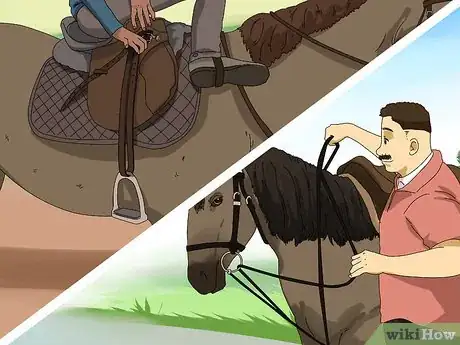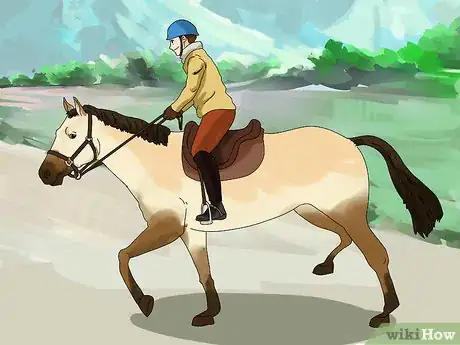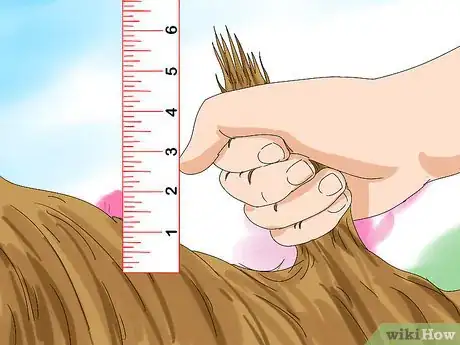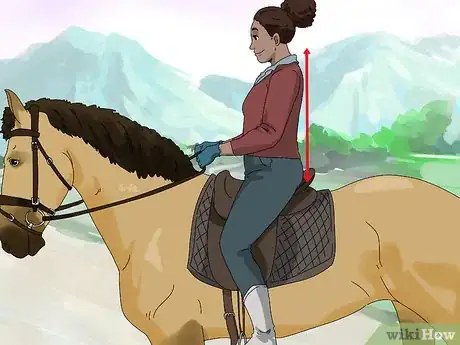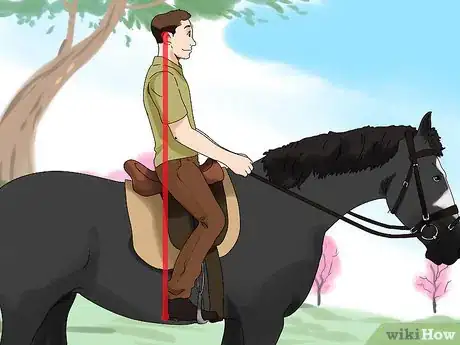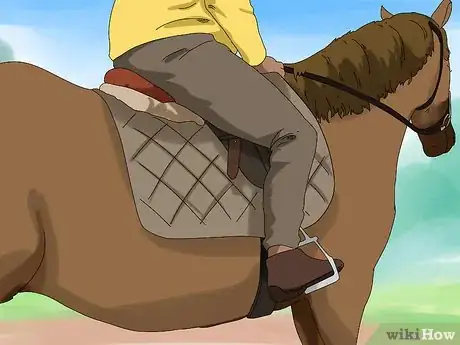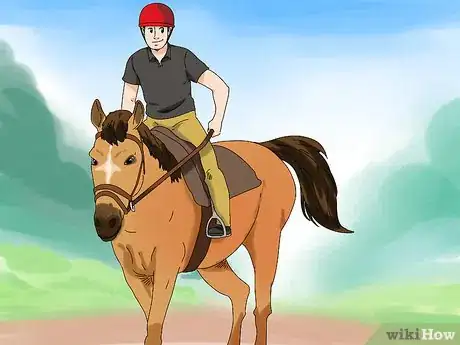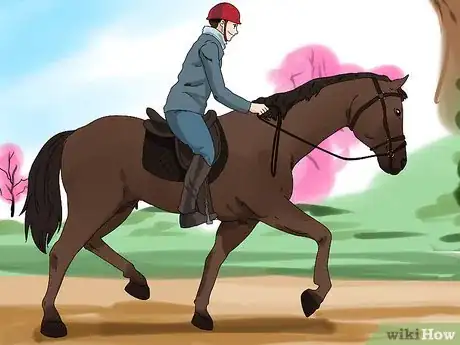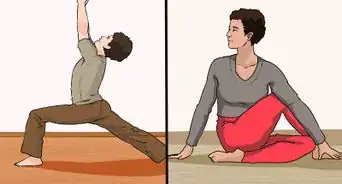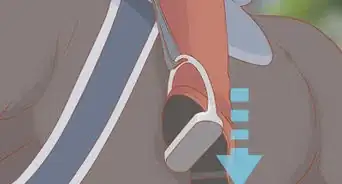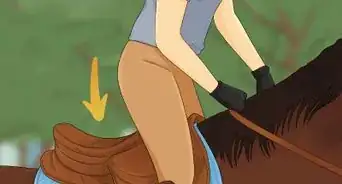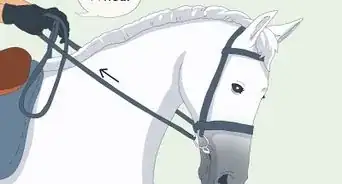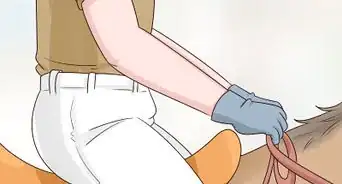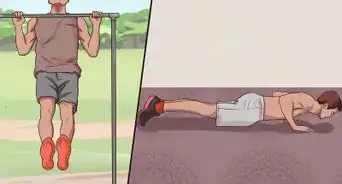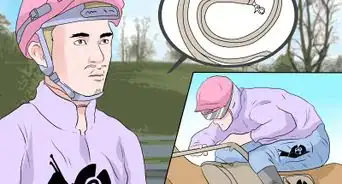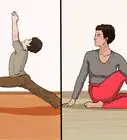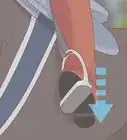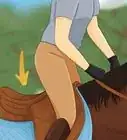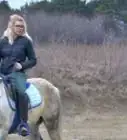X
wikiHow is a “wiki,” similar to Wikipedia, which means that many of our articles are co-written by multiple authors. To create this article, 29 people, some anonymous, worked to edit and improve it over time.
This article has been viewed 142,816 times.
Learn more...
The two-point position puts minimal weight on your horse's back and neck, allowing it to jump more easily and smoothly. This position also improves your leg techniques, as your lower legs are the only things keeping you in the saddle. The position can be tricky to master and can cause injury to the horse if done improperly. Practice in a safe location with a familiar, well-trained horse.
Steps
Part 1
Part 1 of 2:
Entering Two-Point Position
-
1Shorten your stirrups and reins. If your stirrups are too long, maintaining the 2-point position will be exhausting. Since 2-point is used primarily for jumping and the hand gallop, you'll want a slightly shorter stirrup. Shorten the reins as well to retain contact with the horse's mouth.
-
2Assume the 3-point position. This is your "normal" riding position, with both legs and seat fully on the horse. Sink as much weight into your heels as possible. Do not continue until you feel stable and comfortable.Advertisement
-
3Grasp a handful of mane. Take a handful of mane in one hand, about a handspan in front of the pommel (5–6 inches / 13–15cm).
- This step helps you balance. It is not preferred to hold onto any parts of the tack because if the tack falls off you will probably fall off too.
-
4Straighten your back. Push your rear and hips upward, slightly above the saddle. This motion will also help you straighten your back, aligning your heels, hips, and shoulders. Your center of balance should be slightly forward of where it was in 3-point. Steady yourself on the horse's neck until you find your balance point.
- Resist the impulse to squeeze your knees as you lift yourself up.
-
5Keep your feet in line with your back. Your ankles should be under your hips. If your feet are too far back, you may fall forward. If your feet are too far forward, you may fall back.
- Do not straighten your legs. Your knees should be bent forward, so they can flex along with the horse's motion.
Advertisement
Part 2
Part 2 of 2:
Riding in Two-Point Position
-
1Direct your horse forward with your legs. When you feel comfortably balanced, squeeze your horse forward with your legs. Congratulations! You are now riding in a correct, clean 2-point position.
-
2Steer with your legs. If you want to go left, press against the horse with your right leg and "open the door" with your left hand, loosening the reins on that side and pulling outward. To direct the horse right, use the mirror image of these motions.
- Do not steer with the reins except for the motion described. Pulling against the reins too hard may cause you to lose your balance. Use your leg to guide the horse.
-
3Move back to three-point when necessary. You'll probably start feeling uncomfortable or sore quickly the first few times you try this. If you ever feel like you're about to lose your balance, or if you're having trouble directing the horse, return to three-point position. Once you've readjusted your seating or handled a difficult situation, you can return to the two-point position.
Advertisement
Community Q&A
-
QuestionHow hard do you push the horse? I don't want to hurt my horse, so I always do it very lightly, and most of the time, she gets it, but how much pressure should I be applying?
 Community AnswerPush her until she is breathing heavily but as soon as she is, let her walk for a little bit until her breathing is back to normal.
Community AnswerPush her until she is breathing heavily but as soon as she is, let her walk for a little bit until her breathing is back to normal.
Advertisement
Warnings
- It is more difficult to keep your balance and control in this position. Do not use two-point position on an agitated horse or a horse that tends to rear or spook easily. This is also not recommended when riding in unfamiliar areas.⧼thumbs_response⧽
- Do not roll your ankles out. If you do not know what this means, or have trouble not doing it, ask your trainer. (It will result in a very painful experience.)⧼thumbs_response⧽
Advertisement
About This Article
Advertisement
